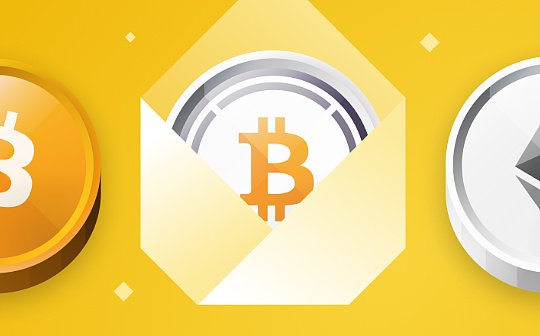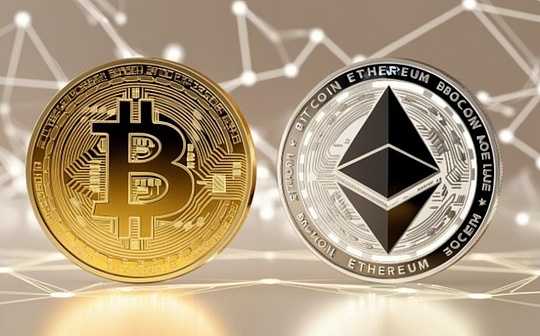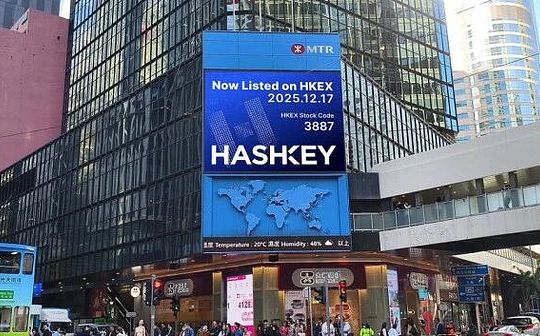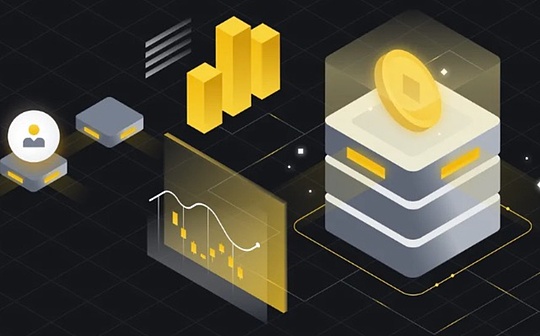
Author: Token Engineering Commons; Compiled by: Sissi@TEDAO
Preface: Building the future infrastructure
Token engineering is an emerging and rapidly developing field responsible for building and connecting invisible pathways used by humans, machines and artificial intelligence in transactions, commerce, communications and coordination.
Since Bitcoin was launched in 2009, we have witnessed significant progress in the cryptocurrency space.The launch of Ethereum in 2015 has sparked a wave of crypto experiments.Prior to the launch of the Ethereum smart contract, token-based economies had very limited design space on production-grade blockchains.It was not until 2018 that the term “token engineering” was formally proposed as these cryptographic experiments matured and the formation of patterns within the ecosystem.
The initial pattern of this emerging field is shaped by elements of blockchain infrastructure, governance mechanisms, privacy solutions, decentralized finance (DeFi) and related subtopics.The permissionless nature of Web3, rooted in open source principles, grows to the point where the social map develops to meet challenges such as coordination.These social infrastructures integrate reputation and reward systems, metrics to assess stakeholder contributions, and identity solutions that maintain a certain degree of privacy while preventing attacks.therefore,Token engineering acts as a reconciler for Web3’s multidisciplinary fields, and its common point is the creative use of tokens.
In recent years, with the advancement of blockchain technology, many token-based systems have been established.The concept of decentralization has penetrated into many organizations, promoting cross-context cooperation.Efforts centered on the regenerative economy have matured and have promoted attention to funding for public goods.Decentralized Science (DeSci) is changing academic infrastructure, with the introduction of Web3 based on the cooperative model, and the overall network algorithm improves operational efficiency, deepens transparency, and increases the complexity of interactions in many successful projects.These are just some of the benefits of attracting more people to build Web3 solutions.However, despite many positive examples, the broader Web3 community has also experienced unprecedented disruptions and reputational damage, which stem from the failure of centralized exchanges such as FTX, token experiments such as LUNA, and the crash of smart contract vulnerabilitiesSuch as The DAO’s failure, Bridge hacking, phishing scams, and the surge in maturity, inadequate due diligence or pump water dumping and Ponzi schemes.
Despite these compelling setbacks and regulatory uncertainty in the crypto market, innovation continues.Individuals and institutions in the blockchain field are increasingly demanding a common language and framework, seeking credible ways to advance their work.
As a tool for decentralizing ownership, claiming rights and enhancing coordination strategies, tokens represent the ambitions that the token system is eager to achieve, and the growing demand for greater privacy and autonomy from consumers.Although the overall concept of token engineering seems clear at a high level, the details of its practice and the precise definition of terms are abstract, which motivates the motivation for conducting this study.Interactions with token engineering practitioners try to answer fundamental questions to enhance the rigor and legitimacy of the token system conception, research, design, implementation, verification and maintenance methods.
therefore,The main question of this study is: What is token engineering?
In this report, we explore this issue through the perspectives of people working in the field—their practices, challenges and needs.We define the development boundaries of this emerging field, share participants’ perceptions about the future, and provide a discussion guide to further explore these topics.
We hope these findings highlight the edges of development in the field and inspire ongoing experiments and imaginations to explore how it shapes our future world.This not only provides profound insights into the theory and practice of token engineering, but also provides valuable reference materials for the majority of practitioners and researchers to help them better understand and promote the development of this field.
Definition of token engineering
In order to answer the key question of this study—“What is token engineering?”—the first thing to do is to clarify the meaning of each keyword:
Tokens
Participants often consider tokens as store of value or assets on the blockchain.One respondent pointed out: “Tokens are encrypted representations of information and/or value that can flow freely between systems like atoms.” In chemistry and physics, atoms are the basic units of matter and are the elements of all chemicals.The basic components, similar to this,Tokens are the basic components of the blockchain-based value exchange system.Our participants made a variety of perspectives.Some believe that tokens are symbols of information and are tools for building social systems; some regard tokens as tools for conducting financial innovation experiments.Tokens can carry one or more value functions at the same time and can be programmed as credit, reputation, vouchers, shares, and equity, etc.They are described as a medium for optimizing goals, opening up new forms of value exchange, ownership and certification representation.The programmability and traceability of tokens are the core of token engineering.
project
Why emphasize “engineering” instead of terms such as token economics, token science, token design or mechanism design?
Two experienced participants cited the Wikipedia definition of engineering, as an appropriate starting point.At the time of this study, the cited definitions are as follows:
“The American Engineering Career Development Committee (2022-2023) defines ‘engineering’ as:
Creatively apply scientific principles to the design or development of structures, machines, equipment or manufacturing processes, or use these individual or combined works; or build or operate the same things and fully understand their designs; or predict them under specific operating conditionsall of which are related to predetermined functions, operational economy and safety of life and property.”
Among the two participants, one emphasized that design is part of the engineering, while the other reiterated that it was a process of designing, verifying, deploying and maintaining artifacts.The use of the term “engineering” is an recognition of the entire process.Discussing only token design may underestimate the importance of these other practices that are directly linked to the ethics and security of what is created.Safety is a word that is often used to describe the importance of engineering.”While you design, it is reasonable to expect that people can use these [artifact/public infrastructure] without having to verify their security or integrity alone or independently.” When people cross the bridge, theyThere is no need to detect the safety of the bridge first, but rather assume that this has been processed during the engineering process, otherwise the bridge will not exist.The term “engineering” seems to extend the same rigorous standard to Web3 systems.Of course, the word “engineering” itself is not enough to ensure safety and ethical implementation.But it does hint at a principle similar to the Hippocratic oath of “no harm”, which many participants believe is necessary for successful progress in the field.Just like the term “design,” many participants believe that terms such as “economics” are too restrictive for the multiple uses and potential of tokens that far exceed traditional decentralized financial or fiscal distribution scenarios.Scenarios are usually associated with the use of tokens in Web3.
Summarize:The tokens mentioned in this report are defined as blockchain assets, while engineering is seen as a scientific approach to building these token-based systems, an approach that emphasizes rigor, security, and ethics.
Analysis of the role of token engineer
Although some participants expressed discomfort in using the term “engineering”, believing that despite their knowledge and expertise and professional skills, this did not prevent them from becoming token engineers.Token Engineers cover the ability to design, implement and validate Web3 artifacts.Some people believe that because each stage involves different professional complexities, it is more suitable for the team to be handled rather than the individual.
Many believe that as the field moves towards specialization, companies should recruit teams rather than individuals to accomplish these tasks, especially when faced with complex or impactful products.Some participants compared to token engineers to product managers to drive projects through stages to ensure high-quality results; the other considered them more like system auditors, focusing on evaluating the security and availability of complex systems.
Although the exact responsibilities of token engineers have not been uniformly defined, there is broad agreement on clarifying the responsibilities of customers and practitioners.This role includes not only engineering skills but also analytics, conference organization, compliance and entrepreneurship, and is part of the entire ecosystem.
Summarize:The role of a token engineer is not just a single position, but a complex process that requires collaboration between multiple roles.As the field develops, it will be very beneficial to learn from the standards and practices of traditional engineering.
Token engineering process
“Inject life into the digital soul.” ——Ataberk Casur
Are there clear steps in token engineering?When engineers design bridges or roads, they do not work in person, but are responsible for making blueprints—those carefully formulated plans for others to use for actual construction to serve the public.Similarly, token engineers also create a set of blueprints that may be handed over to software developers or other personnel to implement.Creating accurate blueprints and guiding the project through various stages forms the core process of token engineering.
Judging from participants’ feedback, most practitioners are not aware of the complete end-to-end process, although it is considered beneficial to make it clear.While not all participants agreed that there was a fixed process, their response revealed some key distinctions and stages.Here will be an overviewThe five basic stages of token engineering: discovery, design, implementation, verification and confirmation, and maintenance.
These stages are iterative and do not necessarily occur in order.It is common to see that the end of one phase may return to the previous phase rather than going directly to the next phase.This may be due to changes in demand, the revelation of new information or revisions to technical and regulatory options.Since these systems contain numerous elements, iteration becomes part of the entire process.
Participants detailed their work and how they ensure the quality of their solutions.The following section further details the stages of the token engineering process.
1) Discovery stage
Description: The discovery phase is usually the stage when you first get in touch with the client and analyze project requirements.At this stage, the development of dialogue translates the issues into clearer project scope, with diverse forms of outcomes such as written documents, charts or roadmaps.During this stage, clients and token engineers will determine the engineering approach that is appropriate for the project and expectations for the future life cycle of the project.
Challenge: Challenges at this stage include unclear needs from stakeholders and communication difficulties with complex concepts and processes.
Highlights: The highlight of the discovery phase is to identify assumptions in the early phase and to identify and plot as many unknown variables as possible.
2) Design stage
Description: The design phase is a stage in which the needs and expectations obtained in the discovery phase are further refined.Here, the system’s goals are established, and indicators for evaluating these goals are proposed.Analyze subject behavior more deeply and design incentives to guide stakeholders’ behavior within the system.This stage also involves technical decisions about the selection of underlying technologies, primitives, platforms and tools.The design phase will also identify and prepare the parameters and conditions required for the implementation phase for simulation, including body-based modeling and algorithmic design.
Challenge: This stage often requires resolving issues of conflict in goals.The final goal and its importance need to be simulated, and sometimes, although people agree on the long-term goals of the economy, there are differences on how to achieve them.The challenge at this stage is also to develop incentive mechanisms that strengthen system value and goals without introducing undesired consequences.
Highlights: Participants clearly distinguished between creating new tokens and handling third-party token flows as possible behavioral options in the system.David Sisson particularly emphasized that the main focus of token engineering is the interweaving of mechanisms and stakeholders, not just token creation.He added that putting the token as the main focus may turn into a distraction element depending on the specific situation, but that does not mean that the token does nothing throughout the process.
The immutability of blockchain is an important feature, but some parts of the system are more likely to change than others.When setting initial conditions, it is crucial to think about all steps and foresee how specific components may be parameterized in the future without redesigning the entire system.Especially in governance, the rapid evolution of governance mechanisms and the gradual decentralization of certain project choices may bring many changes.Considering these potential changes before setting initial conditions helps create more resilient systems.
3) Implementation phase
Description: Computational implementation is a term in computer science, which refers to the fact that the basic properties and relationships of a system are faithfully retained when it is converted from a theoretical model (such as conceptual conceptual) to a computational representation (such as software).At this stage, the initial conditions and parameters determined by the design phase are transformed into formal specifications, which may be mathematical equations, algorithm descriptions, or pseudocodes to generate simulations.The role of simulation and modeling is to promote understanding of the designed system and may verify or overturn certain assumptions so as to adjust and repeat as needed.
Challenge: The implementation phase may require careful adjustment of parameters and specifications to ensure that the computational visualization accurately reflects the model and stakeholder goals.When simulation results are ready to be shared with stakeholders, ensuring the content is clear and easy to understand is also a major challenge.
Highlights: The implementation method is not carried out in isolation in sequence.They can occur during the design, verification, and maintenance phases, as the core of implementation is the transformation between model representations and optimization by observing and iterating the behavior of the system.The implementation methods described by our participants include:
-
Algorithm design: involves defining inputs, clarifying the required outputs, and developing a series of clear steps to convert inputs into required outputs.
-
Subject-based modeling and simulation: Simulate complex systems based on predefined rules for agent behavior and environmental conditions by representing individual agents and their interactions.
4) Verification and confirmation
Description: Verification and confirmation are the cornerstone of token engineering, distinguishing between simple design processes and engineering disciplines with the rigorous nature of building relevant systems, protecting stakeholders from potential risks and weaknesses.
There was considerable disagreement between participants regarding the use of the terms “verification” and “confirmation”.After further review, we found this to be a common debate in the field of engineering, so we selected the most consistent examples in the dataset and illustrate how we use these words.
The “confirmation” process ensures that design choices are technically feasible and effectively meet stakeholder needs and expectations, including considerations such as product market adaptation.Confirm the focus on consistency with user needs and external adaptability to ensure that the final results are in line with the original intention and objectives.
The “verification” process verifies the security, integrity and reliability of the system, including rigorous audits of the code, incentive structure and the entire system.In contrast to confirmation, verification ensures that the final result complies with the description and specification.
The verification and confirmation forms mentioned in this study include digital verification, analog verification and token engineering audit:
Digital: Smart Contract Audit
Simulation: Excitation Structure Analysis
System Audit or Token Engineering Audit: Overall risk assessment, verifying the accuracy of the system, including procedures and rules for how tokens should and should not be used in the protocol.Consider interoperability capabilities, token economics review, system performance evaluation, product market adaptation and regulatory compliance.
Highlights: Trent McConaghy stressed that we can draw theory and practice from analog, digital and mixed signal verification of electrical engineering and apply it to token engineering.Digital verification is relatively mature in token engineering, but existing tools often ignore simulated elements such as incentive design and extreme situations. Simulation verification is still in its early stages, using tools such as cadCAD and TokenSPICE.There is a huge opportunity to develop more analog and mixed signal verification tools.Griff Green proposed the concept of “token engineering audit” and advocated establishing targeted security standards for Web3, covering liquidity strategies and regulatory compliance.
Challenge: External “to be released yesterday” pressure often leads to accelerated due diligence process, which has led to multiple bad results in the market and brought reputational damage to the entire field.It is important to move slowly to speed up your progress and ensuring these phases create the necessary pauses for the project, as it is difficult to change once it is on-chain and used by multiple stakeholders.
Not only can the code go wrong, but human behaviors guided by design incentives can go wrong.This is a moment when system complexity needs to be carefully considered.Therefore, professionals with in-depth knowledge of the entire process are best suited to perform token engineering audits, although research respondents point out that such talent remains scarce in the field.
5) Maintenance
Description: The maintenance phase focuses on the long-term operation effect of the system.Whether it is one month, three months, one year or longer after the system is launched, it is necessary to ensure that everything is running as scheduled.The main work in the maintenance phase includes collecting, analyzing, monitoring data and feedback, verifying the user’s acceptance of design assumptions over time, adjusting evaluation indicators, and comprehensively optimizing the system.
Challenge: Continuous attention to system maintenance and ensuring its importance is a challenge.Participants rarely share ways of how to effectively perform system maintenance in a sustainable way.Who is responsible for continuously updating and maintaining the simulation system?What analysis and monitoring methods can be used?How to improve existing metrics?How long should a token engineer participate in project maintenance?How to establish an effective feedback mechanism with system users and answer these questions is a challenge that token engineers and projects need to face.
Highlights: The economic system is constantly changing and extremely complex.There are always some aspects that need to be adjusted and improved.Token engineers should also focus on how to guide stakeholders in the follow-up maintenance of the system.
challenge
“As an engineer, you always want to design the most robust system to achieve the best interests of all participants, but this is often not easy to achieve.” —Danilo Lessa Bernardineli
Participants face many challenges, with regulatory uncertainty particularly prominent, a problem that has severely slowed down the pace of industry growth and innovation.In addition, individuals also face huge challenges such as continuous skills improvement, addressing diverse expertise needs, balancing work cycles, and avoiding burnout in high-pressure environments.Communication challenges within the industry and when conveying its importance to a wider audience also add additional difficulties.Finding the balance between simplicity and complexity in the token system is also one of the key challenges discussed in this section.While there is no direct path to addressing these challenges, addressing these issues is crucial to the advancement of the field.
1. Standardization
Participants clearly stated that the lack of standardization was a major problem.Specifically, the following criteria are lacking:
-
Standardization of terms
-
Standards for assessing work quality
-
Educational Certification
-
Documentation of learning and case studies
-
The latest, easy to search and easy to obtain knowledge base
Out of 41 participants, 25 emphasized the importance of standardization.Both junior and senior technical engineers face the challenge of obtaining high-quality insights, such as benchmarks, standards, guidelines and frameworks derived from the success and failure of various projects.The lack of standards is seen as a major obstacle to learning efficiency.In the process of finding the information you need, people may have to conduct endless searches to continuously filter out large amounts of data, including irrelevant and outdated information.Furthermore, the lack of standards is considered a major bottleneck in the token system in gaining recognition from regulators and formal organizations.
Although there are already some resources and activities around token engineering, they are clearly failing to meet the current needs of practitioners, highlighting the need to develop more sound and accessible standards to support and expand the field.
2. Communication
Participants elaborated on the key challenges encountered in the multifaceted concept of communication.Specific challenges include:
-
Transform qualitative narrative into quantitative mathematical functions
-
Refine broad goals into specific metrics
-
Lack of common understanding of what token engineering is
-
Customers’ understanding of their needs is unclear
-
During the whole process, there were problems with communication between peers.
-
Convey the subtle differences in design choices to customers
-
Advocate and raise awareness of what is being built to the broader Web3 community
In the field of token engineering, language considerations are not just the distinction between human readable and code language.Token engineers need to handle various forms of information exchange and design effective communication systems.The challenge for participants was to use a variety of “languages”, including mathematics, data analysis and visual representation, to establish effective interaction paths, each of which is a unique way of communication and expression.Inadequate understanding of the field of token engineering, the role of token engineers, and how broad goals can be embodied into measurable indicators, these factors further increase the difficulty of building consensus and communication.Participants also reflected the challenges encountered in communicating work details and the ability to model and simulation.Effective communication is considered a necessary condition for producing high-quality results.
3. Education and Accessibility
Accessibility and rapid knowledge adoption are major challenges that drive the field of token engineering.Specifically, participants highlighted the following issues:
-
Multidisciplinary learning experience is overwhelming
-
Insufficient educational resources related to token engineering
-
Lack of educational or career paths for token engineers
-
Frequently change the use tool and track new versions
-
Junior token engineers face limited career opportunities and lack of mentor guidance
-
The challenge of staying engaged and patient during the learning process
Since the concept of token engineering was proposed in 2018, relevant resources have developed significantly.For example, the use of tools such as cadCAD improves the accessibility of practice.The Token Engineering School’s Basics course has trained hundreds of students into the industry, and the Token Engineering Public Organization is also providing funding opportunities for projects at all stages, promoting the democratization of the industry.These are just one of many initiatives that promote progress in this field.However, education and accessibility remain the main challenges.In this rapidly evolving interdisciplinary field, tools, concepts and application cases are constantly changing.As ecosystem diversity increases, so does the required knowledge base.The mechanism to provide professional approaches to junior practitioners has not yet met the huge demand for professional talents in this field.
Despite the great education efforts carried out by TE Academy, TEC and other institutions, there are many limitations, namely the lack of a path to allow people with absolutely no background knowledge to truly develop corresponding knowledge and experience, thus mastering this field.
To sum up, although some progress has been made in the field of token engineering, the accessibility of education and resources remains a major challenge to the continued development of the field.Here are some key summary and suggestions:
-
Strengthen the construction of educational resources: In order to deal with the problem of insufficient educational resources, the industry should develop and share educational materials more widely, especially training on professional knowledge and tools for token engineering.
-
Innovative education model: To address the limitations of traditional educational methods, more flexible and fast learning paths can be explored, such as online courses, short-term workshops and direct interaction with industry experts, to better adapt to the rapid pace of industry development.
-
Establish career path: Clarify and optimize career paths for token engineers, provide multi-stage career development programs from entry to advanced level, and help junior engineers gradually grow into senior experts in the industry.
-
Promote industry cooperation: Encourage cooperation within the industry, including cross-company and interdisciplinary cooperation projects, which not only improves resource utilization efficiency, but also helps exchange and inheritance of knowledge and technology.
-
Expand the mentor network: Increase investment in mentor resources and establish a more complete mentor system, especially to provide junior practitioners with more opportunities to contact experienced professionals.
Through these measures, the token engineering field can not only solve existing educational and resource issues, but also provide practitioners with a wider range of career development opportunities and learning resources, ultimately promoting healthy and sustainable development across the industry.
4. Funding issues
The lack of funding model for open source development has prompted token engineers to switch to selling consulting services and developing closed tools.Due to the competition and scarcity of resources, a new culture of confidentiality has been formed around the source of knowledge.Specific questions include:
-
Limited resources for developing complex projects
-
Stakeholders usually focus only on short-term returns
-
Usually only projects considered a Ponzi scheme can obtain funds to hire a token engineer
-
Economic vulnerability caused by high dependence on venture capital
-
The ability of a single token engineer is limited, and hiring a complete team to handle all aspects of token engineering is often beyond the budget
-
Lack of financial support for infrastructure and tools
Ensuring that the value created by the project or community can accurately correspond to the tokens, thereby opening up more innovative funding mechanisms is a major challenge facing this field.As various workflows are at different stages of development, the feasibility of design brings additional complexity.Some features and tools may be more mature, while user experience and accessibility are still evolving, depending on specific use cases.The overall situation of Web3 directly affects the working environment of token engineering.The development of numerous tools is just like building bridges and the machinery and equipment required at the same time.In addition to ensuring funding for the token engineering process in projects with clients, participants face resource challenges in developing infrastructure at this complex stage.
5. Complexity and the challenges of the start-up period
The token engineering field faces the following challenges due to its complexity and emerging nature:
-
Multi-level innovations are carried out simultaneously, making it difficult to track input and output
-
The existence of many variables makes it difficult to determine the specific reasons for success or failure of things.
-
Poor user experience and inherent risks indicate that these systems are not suitable for all users
-
Distracted attention and lack of continuous project follow-up
-
Even with models and simulations, people’s actual behavior after system activation is still full of uncertainty
Token engineering is still in its infancy in the field of incentive design, with huge development potential.This field is gradually developing towards academicization, and Web3’s capabilities are also expanding rapidly.Facing challenges in emerging fields can be daunting.Token engineering involves multidisciplinary focus on socio-technical complex systems, which adds to the challenges and complexity of its early stages.
The task of token engineering involves handling complex systems that often contain interconnected and dependent components whose overall behavior and characteristics cannot be directly inferred from the behavior of a single component.The interaction of components within the system leads to nonlinear and emergent phenomena, which are not clearly preset during the system design.This emphasizes the complexity and unpredictability of the task.
In the face of these challenges, we need to recognize and accept the difficulties and complexities of emerging fields while taking positive measures to maturity and development in the field.Through ongoing education and interdisciplinary collaboration, as well as enhanced integration of practice and theory, the token engineering field is able to better address its inherent complexity and changing technological needs.As time goes by, the accumulation of practical experience and academic research will support the maturity of the field, ultimately achieving a more efficient and equitable token system, bringing in-depth understanding and broad opportunities to practitioners and relevant stakeholders.
6. Regulatory compliance
The regulatory environment is the most pressing concern expressed by participants when discussing the issue of keeping them awake at night.The main reasons include:
-
The risks and consequences of token experiments are unclear
-
Responsibility issues, especially about who may be responsible for the multi-stakeholder system
-
Regulatory constraints lead to slowing down industry development
-
The risk is too high, because not all projects can take the risk of token innovation while ensuring regulatory compliance
-
Costs of accidents or delays caused by insecurity in the design phase
-
Legal expertise based on blockchain experiments is limited
Navigating the complex landscape of regulatory compliance for token engineers presents a major challenge, which affects key decisions at the intersection of innovation and legal frameworks.This delicate balance often translates into practical challenges, where carefully conceived token engineering projects may experience delays and increased risks due to unclear regulation.Many examples show that due to legal uncertainty, strictly developed models have encountered obstacles, resulting in hindering development.
Summarize:
Regulatory uncertainty and communication barriers hinder the development of the field.Lack of standardized practices and limitations of educational resources exacerbate expenses, while funding models present additional challenges to innovation and industry growth.Despite the potential, token engineering is still in its early stages and faces numerous challenges.








